Exhibition review: Rossetti’s Obsession
Averil King relishes a show spotlighting a famous love triangle.
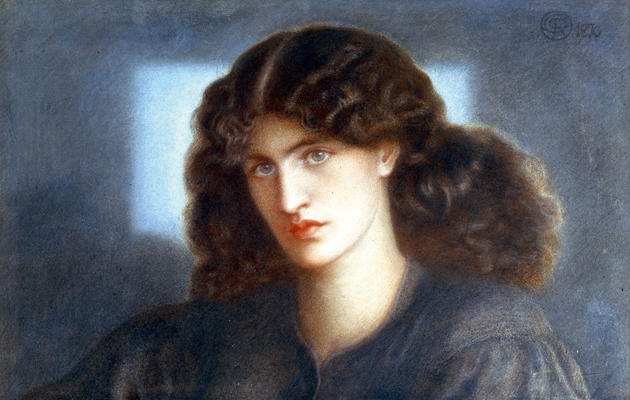

In Oxford in 1857, two young artists, William Morris and Dante Gabriel Rossetti, met the impoverished 17-year-old daughter of a stableman and a laundress. Her name was Jane Burden and they were captivated by her. In 1859, Morris married her and they soon had two daughters. In 1871, Rossetti, having recently lost his wife Elizabeth Siddal, and with Morris’s magnanimous but grudging agreement, began an affair with her.
The subject of this small but exquisite exhibition, first shown in Bradford and then at the Lady Lever Gallery in Port Sunlight, is the long series of works by Rossetti inspired by his love for Morris’s wife. With her glorious, thick, waving dark hair and bewitching deep-grey eyes, Jane, although uneducated, seems to have been astute enough to realise that her looks could make her a successful model.
From as early as 1858, Rossetti posed her for professional photographers—the exhibition includes several examples of these emotive images. And, from 1871, Jane’s ‘sovereign face’, as Rossetti called it, inspired a series of portraits of her in different guises. The versions shown here are mostly in chalk or pastel on paper and quite large for works in these media; they are astonishing creations, as Rossetti’s immense skill enabled him to emulate the gentle blush of Jane’s skin and her abundant tresses.
Rossetti’s father was a scholar of Dante and the artist grew up with a knowledge of the 13th-century Italian poet’s laments for his intense, doomed love for Beatrice. As the exhibition makes clear, his own, tragic, ultimately frustrated feelings for Jane mirrored Dante’s experience. A subject from Dante’s Vita Nuova, La Donna della Fiamma was one of his first portraits of Jane, showing her as a distraught, orange-robed figure holding a flame that, in Dante’s poem, symbolises his sudden passion for Beatrice.
The quieter, beautifully executed chalk study of the recumbent Jane’s head and shoulders, also on display, was a preliminary compositional exercise for the oil painting Dante’s Dream at the Time of the Death of Beatrice.
Among the series of remarkable portraits, one of the most compel- ling is La Donna della Finestra, dating from 1870. Taking its subject again from Vita Nuova, in which Dante mourns the death of his beloved Beatrice, it shows a beautiful woman looking down at the poet from a window. Her expression is so sorrowful and pitying that he is momentarily consoled for his loss. Here, Jane is dressed in deep grey, her head slightly inclined and outlined against the light cast by the window, her hands resting in front of her on its ledge.
After an idyllic summer spent with Jane at Kelmscott Manor in 1871, Rossetti became increasingly mentally unstable and, a few years later, she regretfully broke off their relationship. He continued to create images inspired by her and among these was a portrait of Pandora, the mythological figure from Greek legend who opened her casket to release the many evils that afflict mankind.
Sign up for the Country Life Newsletter
Exquisite houses, the beauty of Nature, and how to get the most from your life, straight to your inbox.
The study for this subject and the portrait itself, both in coloured chalk and dating from 1878, can be compared in the exhibition the finished work featuring Jane as a sultry, malevolent demi-goddess. In a composition with a pale and eerie tonality, she is swathed in white, with the long fingers of her right hand curved round the lid of the casket as she prepares to open it.
In 1875, Jane visited Rossetti at Bognor Regis, to sit for his portrait of her as Astarte, the archaic predecessor of Venus. With his penchant for the disconcerting, here he showed her as a brooding, melancholy figure.
The subject of the oil painting, Proserpine, 1882, a copy of Rossetti’s original version of 1871, is an allegorical figure, also known as Persephone, who, banished by Pluto to the underworld each winter for eating a fruit of Hades, reappears on Earth in springtime. With its glowing oranges and greens, this image of an auburn-haired Jane holding a pomegranate also symbolises their parting after their summer together in 1871.
Although he achieved fame and exhibited at the Royal Academy, Rossetti’s health continued to deteriorate and he died in 1882, aged only 54. Jane and her husband, however, were reconciled, living harmoniously together until Morris’s death in 1896.
‘Rossetti’s Obsession: Images of Jane Morris’ is at the William Morris Gallery, Forest Road, Walthamstow, London E17, until January 4, 2015 (020–8496 4390; www.wmgallery.org.uk). An exhibition catalogue with the same title is published by Bradford Museums & Galleries (£8)
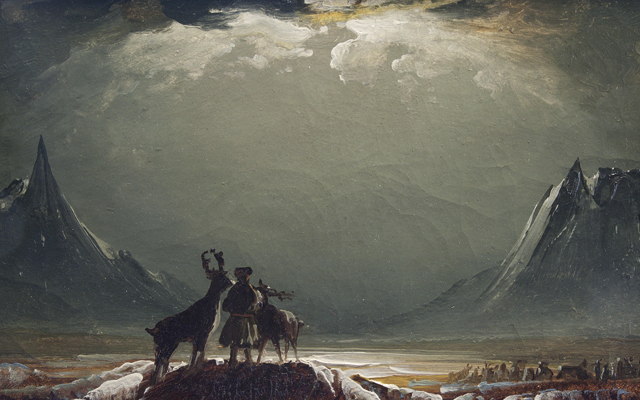
Exhibition review: Peder Balke at the National Gallery
This new exhibition at the National Gallery explores Peder Balke’s dramatic landscape paintings.
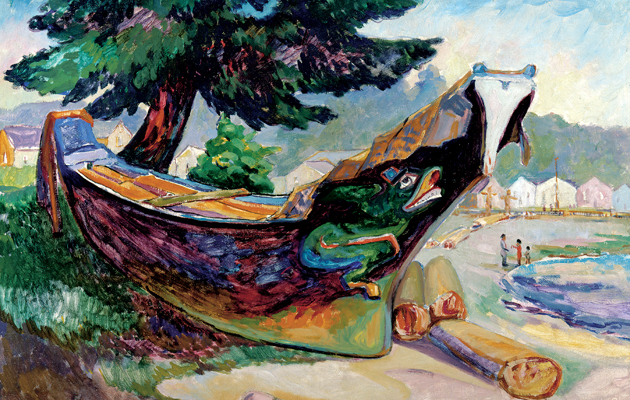
Exhibition review: Emily Carr (1871-1945) at the Dulwich Picture Gallery
Dulwich Picture Gallery presents the first major solo exhibition in Europe of the Canadian artist Emily Carr, exhibiting six rooms
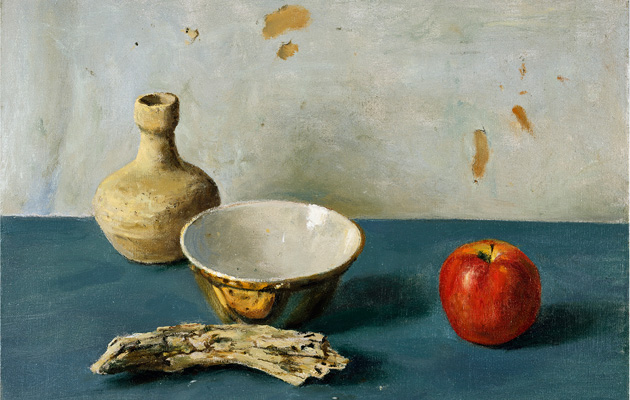
Credit: Eric Rimmington
Exhibition review: Eric Rimmington still-lifes in Henley-on-Thames
This new exhibition in Henley-on-Thames admires the still-life paintings of Eric Rimmington.
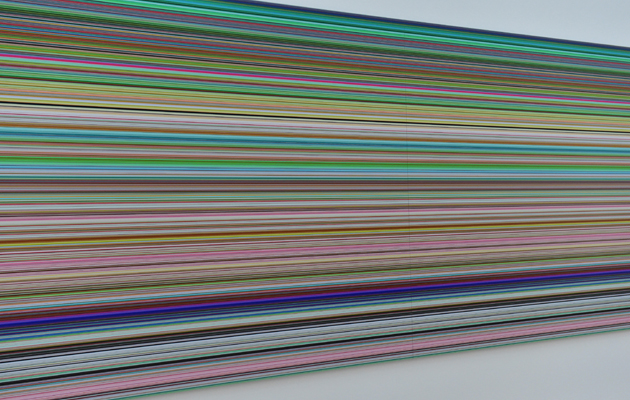
Exhibition review: Gerhard Richter at Marian Goodman Gallery
This much anticipated exhibition, which launches New York dealer Marian Goodman’s Victorian warehouse gallery, surpasses expectation.
Country Life is unlike any other magazine: the only glossy weekly on the newsstand and the only magazine that has been guest-edited by HRH The King not once, but twice. It is a celebration of modern rural life and all its diverse joys and pleasures — that was first published in Queen Victoria's Diamond Jubilee year. Our eclectic mixture of witty and informative content — from the most up-to-date property news and commentary and a coveted glimpse inside some of the UK's best houses and gardens, to gardening, the arts and interior design, written by experts in their field — still cannot be found in print or online, anywhere else.
-
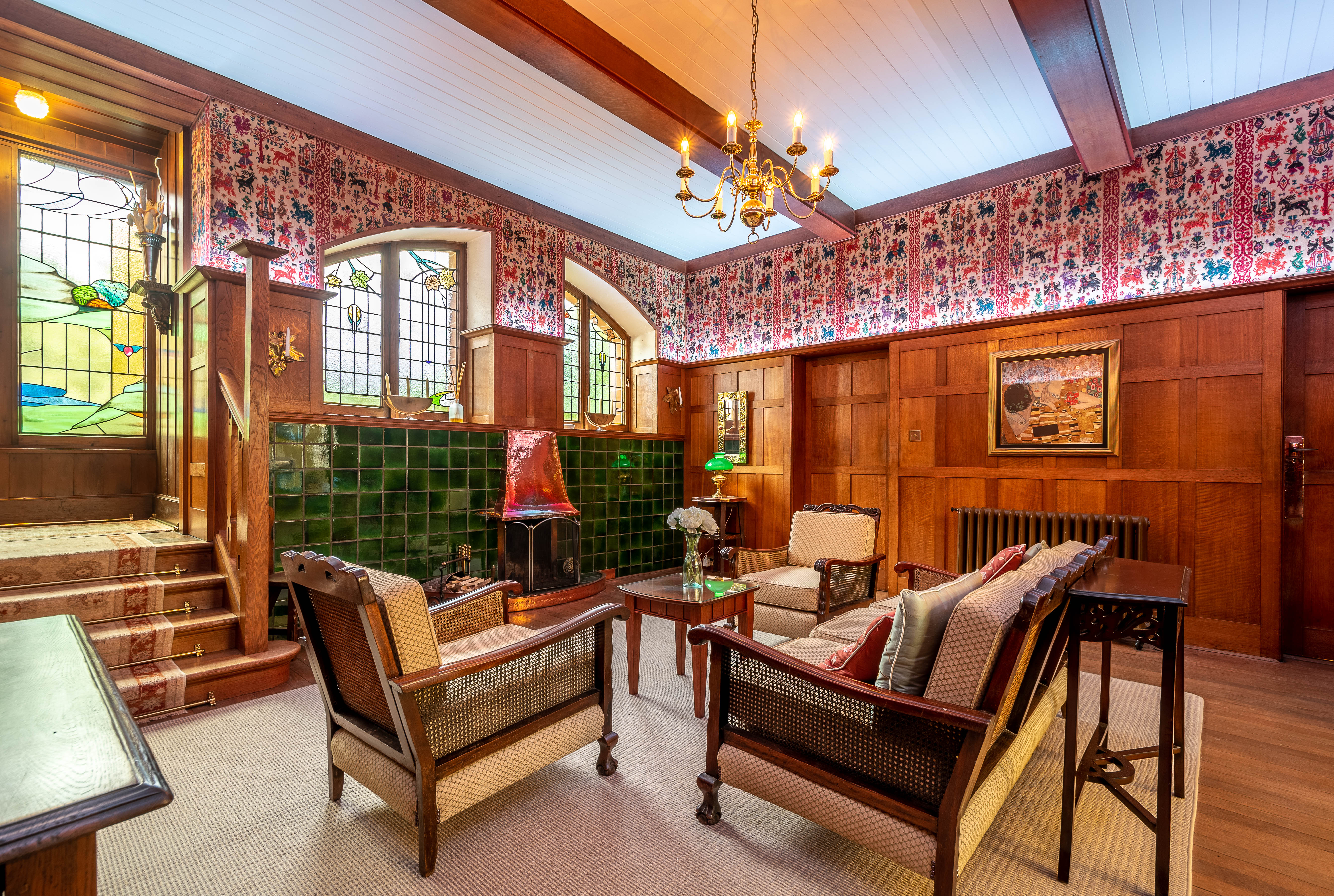 Seven of the UK’s best Arts and Crafts buildings — and you can stay in all of them
Seven of the UK’s best Arts and Crafts buildings — and you can stay in all of themThe Arts and Crafts movement was an international design trend with roots in the UK — and lots of buildings built and decorated in the style have since been turned into hotels.
By Ben West
-
 A Grecian masterpiece that might be one of the nation's finest homes comes up for sale in Kent
A Grecian masterpiece that might be one of the nation's finest homes comes up for sale in KentGrade I-listed Holwood House sits in 40 acres of private parkland just 15 miles from central London. It is spectacular.
By Penny Churchill